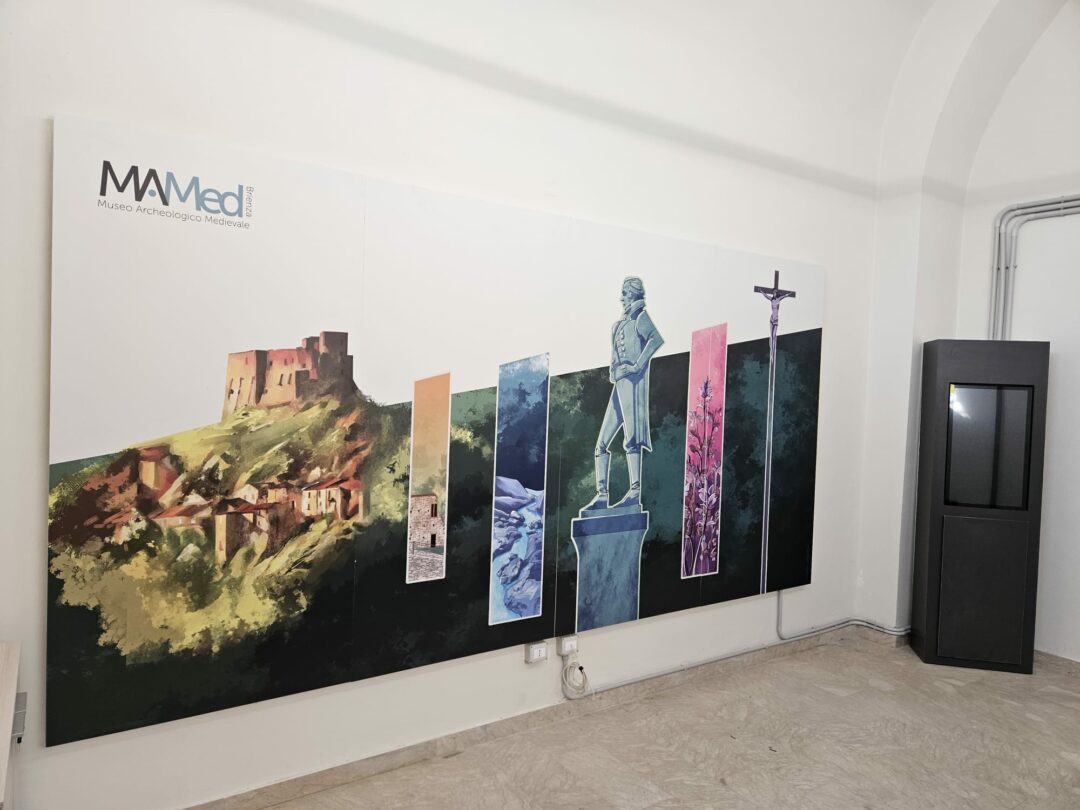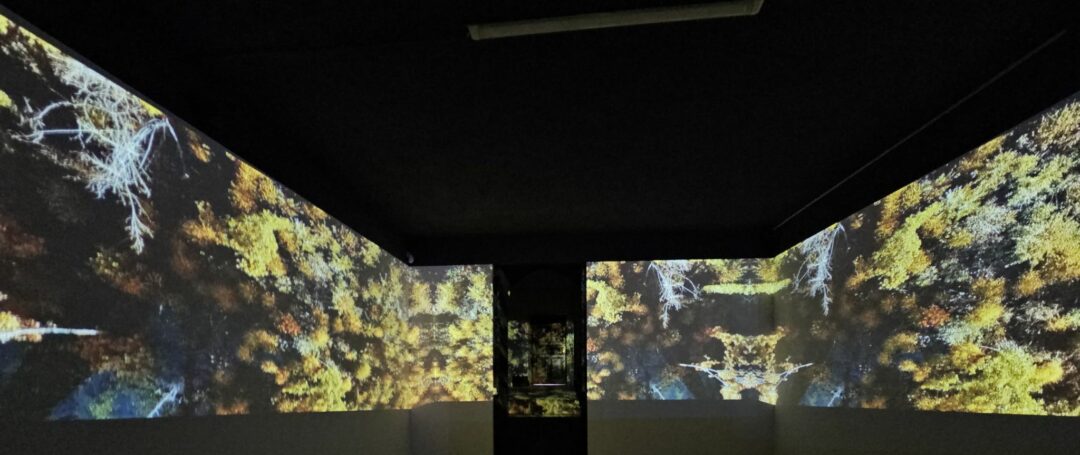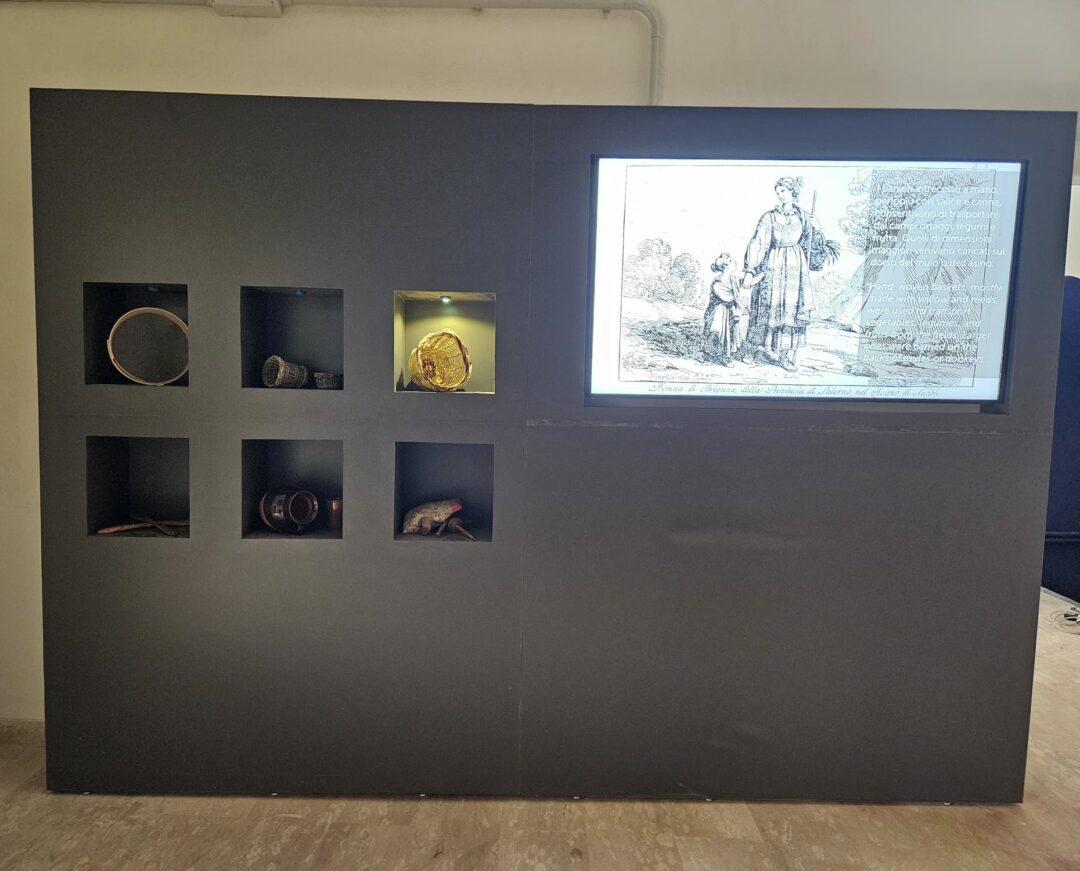Brienza is one of the Italian medieval centers that has best preserved its identity, so much so that in 1993 the Ministry for Cultural and Environmental Heritage included it among the sites of significant historical and artistic interest.
It is upon this cultural and landscape treasure that the idea of creating a museum dedicated to the history of the city of Brienza is based, an integrated project of enhancement located in one of the symbolic monuments of the Burgentina community: the former Convent of the Friars Minor Observants, built in the second half of the 17th century with the adjacent Church of the Annunciation, which today houses the Municipality on the first floor. The Museum offers an innovative journey dedicated to the history, culture, and transformations of Brienza, from the medieval era to the present day. It is a surprising, multimedia, and sensory journey through 2000 years of history.
NetCom won the tender for the creation of MaMed, the Archaeological and Medieval Museum of Brienza, where the use of new technologies complements traditional storytelling to create a dialogue between the exhibited objects and their “virtual script.”
The exhibition space is designed as a real “learning journey,” full of surprises and animated by exhibits with clear, concise content expressed through videos, audiovisual materials, animations, and sound suggestions.
The museum route develops on the ground floor of the convent complex.
- Hall

From the entrance door that faces Piazza dell’Unità d’Italia, visitors enter the museum’s hall, a space dedicated to welcoming services and information. A large image with a 3D map of the medieval Borgo, reconstructed in computer graphics, and a multimedia totem display the significant locations and experiences of the territory.
All text content, as well as audio comments and videos, are presented in both Italian and English.
2. Cloister Porch
The museum route continues inside the cloister, a welcoming architectural space enriched with frescoes depicting episodes from the lives of St. Francis and St. Anthony, created in the mid-18th century by the Burgentina painters Pietro and Leonardo di Giampietro.
The history of the Convent and the pictorial cycle are presented on panels and backdrops placed on the right side of the porch, with images and texts telling the story of the Franciscan settlement, starting with the initial establishment in 1525 near the Pergola river, which was soon abandoned due to the site’s unsanitary conditions, followed by the construction of the new Annunziata monastic complex around 1570. This complex became the seat of the General Studies of Theology and Philosophy, and eventually was acquired by the state and assigned to the Municipality of Brienza.

The ancient history of Brienza, from the fall of the Roman Empire to the peak of the village’s expansion in the feudal era, is narrated in the cloister through texts, images, and videos that animate “the timeline,” an integrated system of panels and technologies placed along the side walls.
The narrative begins with the first testimonies of communities along the Herculia route, the system of watchtowers with the Towers of Satriano and Picerno, and the medieval town layout of Brienza, which is still clearly visible today, beginning with the castle built on the summit of Ripa delle Forre. Around the castle, two residential areas developed: one near the church of San Martino and the other in the Spineto district, near the monastery of San Giacomo. These ancient neighborhoods later expanded to include those around the churches of Santa Elisabetta and San Nicolò dell’Arco.
The “timeline” spans several historical periods, including the Norman-Swabian, Angevin, and Aragonese periods, highlighting the transfer of the fief to various feudal lords. With the arrival of the Aragonesi on the throne of Naples, Brienza was reassigned to the Caracciolo family, who governed the area almost uninterruptedly until the abolition of feudalism.
The final part of this section is dedicated to the noble palaces and portals that characterize the entire urban layout, providing a reconstruction of the city’s impressive development during the modern age.
In the cloister, there is also an interactive table that allows visitors to delve into the history and characters of Brienza, using a “card-play” system that engages both adults and children.
3. Exhibition Rooms
In the five exhibition rooms, four of which are located behind the cloister, the narrative continues, this time focused on specific themes related to the cultural landscape and social history that shaped Brienza’s identity.
Illustrious Voices
The first room features a captivating display designed to surprise and engage visitors by narrating the biographies of some of the key cultural and scientific personalities born in Brienza.
The wall displays a collection of 18th-century sculptures, which, over time, have lost their heads, but these heads are restored through an innovative installation: a technological system that allows visitors to view the digital representation of the character’s face and listen to a brief narrative of their story, all provided by a narrator’s voice.

Among the “illustrious voices” are:
- Francesco Mario Pagano, patriot, jurist, and humanist
- Francesco Saverio Bruno, jurist
- Luigi Maria Ferrarese, psychiatrist
- Cataldo Iannelli, philologist and philosopher
- Luigi Giampietro, magistrate
- Vincenzo D’Elia, priest and politician
- Cataldo Carone, surgeon
- Paolo Conforti, surgeon
- Benedetto Conforti, jurist
- Cataldo Iannelli, archaeologist and glottologist
- Guida Iannelli, scientist
Brienza Experience

The second room is entirely dedicated to an immersive projection, a combination of art and digital technology (360° projection system) that aims to present Brienza’s monumental, artistic, and landscape heritage in an innovative and entirely original way, using high-resolution videos.
The quality of the music, synchronized with the movement of the images, creates a unique learning experience, making visitors feel as if they are truly inside the works, nature, and stories depicted.
The Voice of Water
The third and fourth small rooms are dedicated to the story of the Burgentina community’s life, animated by springs and watercourses, which have been a key resource for the area’s social and economic development.

These rivers are typically torrent-like, but the municipal area of Brienza is home to a dense network of springs, once essential for the life of mountain rural populations. These watercourses powered many mills and workshops throughout the Burgentina region, leaving lasting traces. This millennia-long flow also created the so-called “giant’s pots” or “devil’s pots,” deep rocky depressions shaped like wells, formed by fluvial erosion in areas once covered by glaciers.
In the first of the two rooms dedicated to water, the story is told through a large interactive exhibit called the “magic box,” a self-supporting structure that presents the urban and rural production systems connected to water, using texts, images, videos, and objects.
At the center of the exhibit is a monitor displaying video images of the mill’s route, accompanied by six “magic boxes” containing objects closely linked to the water-powered production system. Visitors can touch the objects, which trigger the video narrative related to each item.
In the second room, water takes center stage in an oral narrative of traditions, in a space marked by water colors and a soundscape that mimics its flow.
Francesco Mario Pagano
After the route through the cloister and the rear rooms, the visit continues in the fifth exhibition room, which leads to the library and connects to the conference room. This room is dedicated to Francesco Mario Pagano.
A jurist, philosopher, and writer, Pagano was one of the leading figures of Southern Enlightenment. Born in Brienza in 1748, he was a professor of ethics and law at the University of Naples, where he studied under Antonio Genovesi and Gaetano Filangieri. He was one of the founders of the Neapolitan Republic, but when the Bourbon monarchy regained power, he was sentenced to death and executed, despite appeals from across Europe, in Piazza Mercato on October 29, 1799, at just 51 years old. His bust is among the Founding Fathers in Pincio, Rome.
The room contains panels recounting his life story, and also showcases the famous and poignant painting Francesco Mario Pagano while the execrable Special Judge, after reading the death sentence, insults him with mocking words, painted by Giacomo Di Chirico and first displayed at the 1869 exhibition of the Society for the Promotion of Fine Arts in Naples. The artwork was later donated to the Provincial Council of Basilicata and ultimately acquired by the Municipality of Brienza.
The room also features a reproduction of the work The Arrest of Neapolitan Patriots aboard a French Schooner by Michele Tedesco, a bas-relief by sculptor Tito Angelini preserved at the San Martino Museum in Naples, a marble bust from 1863 by Antonio Busciolano (Tribunal of Potenza), and the bronze monument created by Achille d’Orsi and unveiled in Brienza’s town square in 1890. These pieces form the core of artworks dedicated to the jurist and patriot.
A square display case in the center of the room contains some of Pagano’s major published works, including Political Essays, Considerations on Criminal Trials, his dramatic works, and more.
4. The Library
The visit continues in the library space, which houses valuable volumes and historically significant works, along with an exhibition dedicated to places of worship and sacred art.
Panels and display cases, positioned in a way that does not obstruct bibliographic consultation, showcase the city’s great religious heritage, from the Sanctuary of the Holy Crucifix and the related rituals, to the itinerary of the Seven Churches.
Related Posts
16 January 2025
Istituto Poligrafico Zecca dello Stato
Congruenza di applicativi con la normativa AGID


